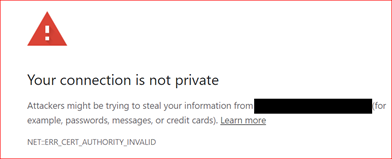- When autocomplete results are available use up and down arrows to review and enter to select.

Security is something that we should all take seriously. In the real world we can change our locks, get better more secure ones. The options are endless and there is always going to be a better and more secure one depending on your needs and specific circumstances.
In the online world there are many security issues to worry about and companies are always looking for better ways to assure their potential users that their information is safe when interacting with them. After all, the world of transactions is a 2-way street requiring some level of trust, assurance and socially distant handshaking.
This is where the Transport Layer Security (TLS), most commonly referred to by its older term – Secure Socket Layer (SSL). In this article I am going to attempt to explain the world of SSL/TLS in the briefest possible manner whilst giving you a satisfactory understanding into the world of online web security, where certificates are involved and what that may mean for your organization.
We can all agree that there are many bad actors masquerading as otherwise on the World Wide Web. Their main aim is to get a hold of your personal information anyway they can. One of the ways they achieve this is to intercept the communication between the browser and an unsecured site. With the right SSL/TLS certificate from a trusted Certificate Authority (CA), you ensure a secure internet connection by encrypting the data sent between the browser and an SSL/TLS secured website.
Since its introduction in the mid-90s, SSL/TLS has become the standard that all major browsers use to ensure a secure connection. Just like many things software, there has been many versions; more secure with every iteration and by introducing stronger hash algorithm and patching discovered security floors, you can rest easy knowing that you have the most up to date SSL/TLS (current version as of this blog is TLS 1.3). As such having an up to date certificate on your website show clients and potential clients that you take the security of their personal information very seriously.
Surveys have also shown that sites with SSL/TLS certificates are more trusted by users because they know their private information is encrypted and protected. As well as being more likely to appear in top searches in search engines. Many of the top browsers will also warn users when they are about to interact with a site that has not been secured with an SSL/TLS and boost those that are secured. Some may even block the user from accessing the site altogether. In many ways it can also be used a great SEO tool.


Your first steps into the world of SSL/TLS Certificates can be an intimidating one. With so many to choose from, how do you know if you are getting the right one. We can really get into the thick of it and delve as far as the rabbit hole goes with SSL/TLS but, we will be left in a situation where we won’t see the proverbial forest for the trees. So, lets take a step back and look at the big 3:
Contact Brian Malm at Safenames today to discuss how we can help you.
Email: sales@safenames.net
Tel: 01908 200022

Brian Malm
Registry Liaison Executive
We can customise a solution to fit your business needs.